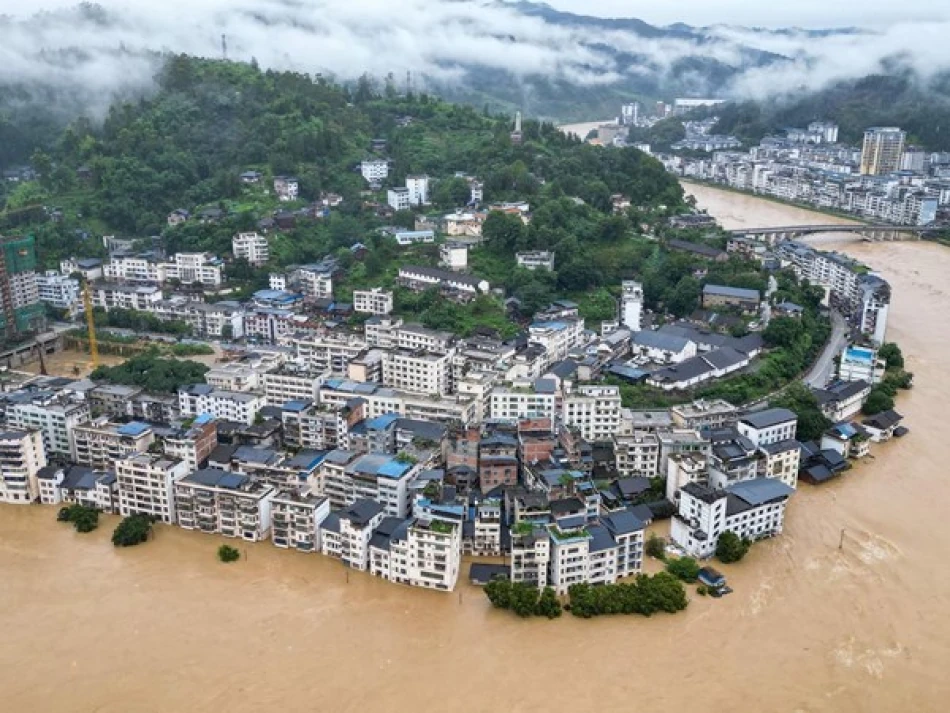
Heavy Rains Prompt Beijing to Heighten Preparedness Measures
Beijing Braces for Catastrophic Flooding as Climate Crisis Intensifies China's Weather Extremes
Beijing has placed six of its mountainous districts under maximum alert as meteorologists warn of potentially devastating rainfall that could dump a third of the city's annual precipitation in just six hours. The emergency measures come barely a month after the worst flooding to hit China's capital since 2012 claimed at least 44 lives, highlighting the growing vulnerability of megacities to extreme weather events.
Unprecedented Rainfall Threatens 22 Million Residents
Weather experts predict up to 200 millimeters of rain could fall across parts of Beijing starting from midday Monday—a staggering amount considering the entire metropolitan area of 22 million people typically receives just 600 millimeters annually. The six districts under highest alert—Mentougou, Fangshan, Fengtai, Shijingshan, Huairou, and Changping—are all located in the mountainous regions west and north of the city center.
Local authorities have warned residents against unnecessary travel, with officials describing the risk of flash floods and landslides as "extremely high." The mountainous terrain of these districts creates natural funnels that can rapidly channel rainwater into deadly torrents, making them particularly vulnerable to sudden flooding.
A Pattern of Escalating Weather Disasters
This latest weather emergency represents more than an isolated incident—it signals a troubling acceleration in extreme weather patterns affecting China's most populated regions. The July flooding that killed 44 people marked Beijing's worst water-related disaster in over a decade, yet officials now face an equally severe threat just weeks later.
Infrastructure Under Pressure
Beijing's rapid urbanization over the past two decades has created vast expanses of concrete and asphalt that prevent natural water absorption, forcing rainfall to flow rapidly through drainage systems never designed for such extreme volumes. The city's mountainous geography compounds this challenge, as steep slopes accelerate water flow toward densely populated valleys.
Economic and Social Implications
The repeated flooding threats carry significant economic consequences for China's political and financial center. Business disruptions, infrastructure damage, and emergency response costs strain municipal budgets while highlighting the urgent need for climate adaptation investments. Insurance companies operating in China face mounting pressure as weather-related claims surge across the country's major urban centers.
Comparison with Global Megacities
Beijing's flooding challenges mirror those faced by other major Asian cities, from Jakarta's chronic subsidence and flooding to Mumbai's monsoon-related infrastructure failures. However, Beijing's situation is particularly acute due to its combination of mountainous terrain, rapid urbanization, and increasingly erratic precipitation patterns linked to broader climate shifts affecting northern China.
Government Response and Future Preparedness
The maximum alert system demonstrates Chinese authorities' growing sophistication in disaster preparedness, reflecting lessons learned from previous flooding disasters. However, the frequency of these extreme weather events suggests that reactive emergency measures may prove insufficient without substantial long-term infrastructure investments and urban planning reforms.
The current crisis also tests Beijing's disaster management capabilities ahead of what meteorologists predict could be an increasingly volatile weather season. Success in managing this emergency could provide a template for other Chinese cities facing similar climate-related challenges, while failure might accelerate demands for more comprehensive flood defense systems across the country's urban centers.
 Layla Al Mansoori
Layla Al Mansoori







